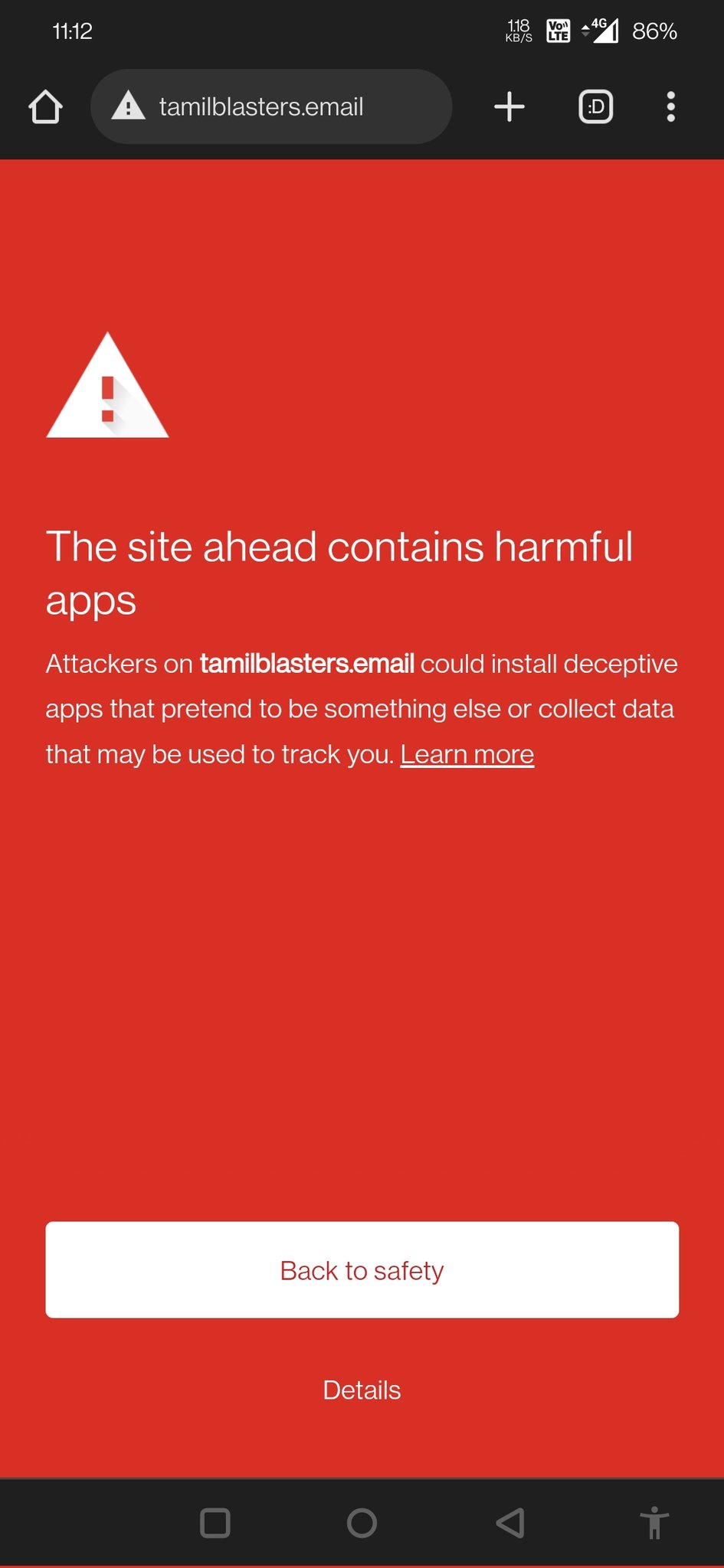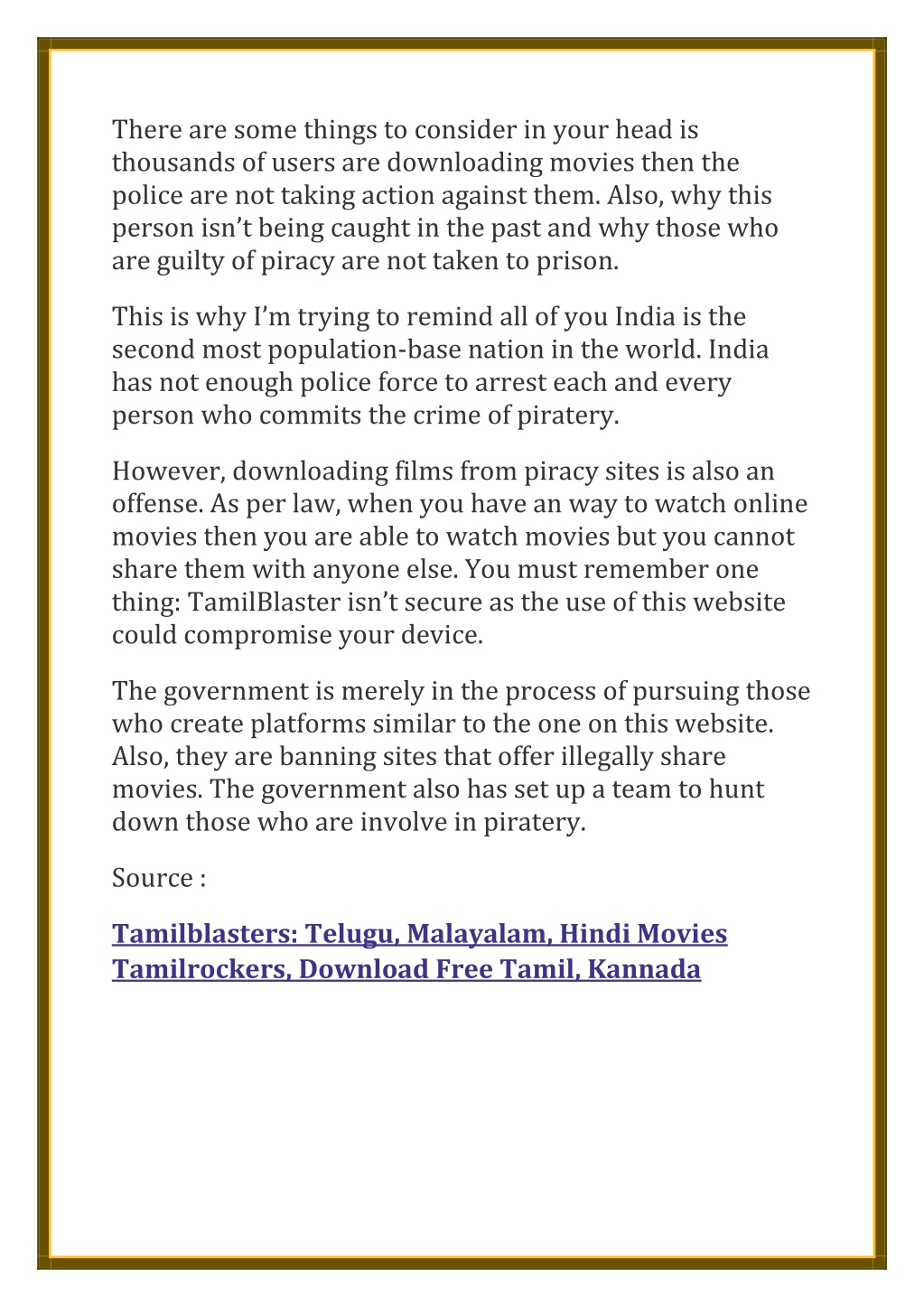Is TamilBlasters a legitimate platform for accessing regional language films? The question sparks debates across online communities, where the legality and ethical implications of downloading content from unauthorized websites remain contentious. A bold statement must be made: engaging with illegal streaming sites not only undermines intellectual property rights but also poses significant risks to users' cybersecurity. Yet, millions continue to rely on platforms like TamilBlasters for accessing Tamil, Malayalam, Telugu, Kannada, and Hindi movies.
TamilBlasters operates as an unregulated torrent platform offering downloadable links for regional-language films. Despite its popularity among cinephiles, the website remains in legal gray areas due to copyright violations. Originally established under various domain names, TamilBlasters has undergone multiple transformations over the years. Each iteration aims to circumvent internet restrictions imposed by authorities while maintaining access to pirated content. As of recent updates, the site's primary URL points to tamilblasters.com, though this address frequently changes depending on server availability and regulatory crackdowns. Users often turn to proxy servers or virtual private networks (VPNs) to bypass geo-restrictions when accessing these domains.
| Category | Details |
|---|---|
| Website Name | TamilBlasters |
| Primary Domain | tamilblasters.com |
| Content Type | Tamil, Malayalam, Telugu, Kannada, Hindi Movies |
| Launch Year | 2013 |
| Legal Status | Illegal - Operates without proper licensing |
| Security Rating | No child safety rating; potential malware risks |
| Official Website Reference | Visit TamilBlasters |
While TamilBlasters caters primarily to South Indian audiences, its user base extends globally, particularly among expatriate communities seeking native-language entertainment. However, accessing such platforms carries inherent dangers. Unauthorized downloads expose devices to malicious software embedded within files. Furthermore, personal data collected during registration processes could compromise privacy. To mitigate these risks, experts recommend using reputable VPN services like FastestVPN, which encrypt traffic and anonymize IP addresses, thereby enhancing online security.
Proxy lists serve as lifelines for users navigating blocked URLs associated with TamilBlasters. These intermediary servers reroute requests through alternate pathways, enabling uninterrupted access despite regional censorship measures. Popular proxies include tamilblastersproxy.xyz, tbmirror.org, and tbtorrents.net. Nevertheless, reliability varies significantly between providers, necessitating vigilance when selecting suitable options. Additionally, frequent updates to these mirrors ensure continuity amidst periodic shutdowns initiated by enforcement agencies.
In response to growing demand for legitimate alternatives, several authorized streaming platforms have emerged, offering vast catalogs of regional cinema at competitive subscription rates. Examples include Amazon Prime Video India, Disney+ Hotstar, ZEE5, and MX Player. These services collaborate directly with filmmakers and production houses to deliver high-quality content legally. Subscribing to such platforms supports creators financially while eliminating exposure to illicit activities linked to piracy hubs like TamilBlasters.
Beyond mere accessibility concerns, discussions surrounding TamilBlasters inevitably touch upon ethical dimensions. By facilitating unauthorized distribution of copyrighted material, such websites undermine artistic endeavors and devalue creative labor. Filmmakers invest substantial resources into producing films, expecting fair compensation through official channels. When viewers opt for pirated versions instead, they contribute to systemic exploitation perpetuating within the industry. Consequently, efforts to combat digital piracy require collective action from both producers and consumers alike.
Recent developments indicate increased scrutiny targeting illegal streaming operations worldwide. Regulatory bodies are collaborating more closely than ever before to identify offenders and dismantle their networks. For instance, court orders mandating Internet Service Providers (ISPs) block access to known pirate sites represent proactive steps toward curbing unlawful practices. Simultaneously, awareness campaigns educate the public about consequences tied to consuming pirated media, encouraging responsible consumption habits.
Despite mounting pressures, TamilBlasters persists as a prominent fixture within underground movie-sharing ecosystems. Its resilience stems partly from adaptability—shifting hosting locations, adopting new encryption techniques, and leveraging decentralized architectures make detection challenging. Moreover, widespread indifference towards intellectual property laws among certain demographics fuels continued patronage. Addressing these issues demands multifaceted approaches encompassing technological innovation, policy reformulation, and cultural attitudinal shifts.
As debates around TamilBlasters unfold, stakeholders grapple with balancing consumer convenience against creator protections. While acknowledging the allure of free content, it becomes imperative to recognize the long-term detrimental effects stemming from unchecked piracy. Moving forward, fostering environments conducive to sustainable growth within the entertainment sector requires prioritizing ethical considerations above short-term gains derived from exploiting loopholes. Ultimately, choices made today shape tomorrow's creative landscapes, influencing generations yet unborn.



